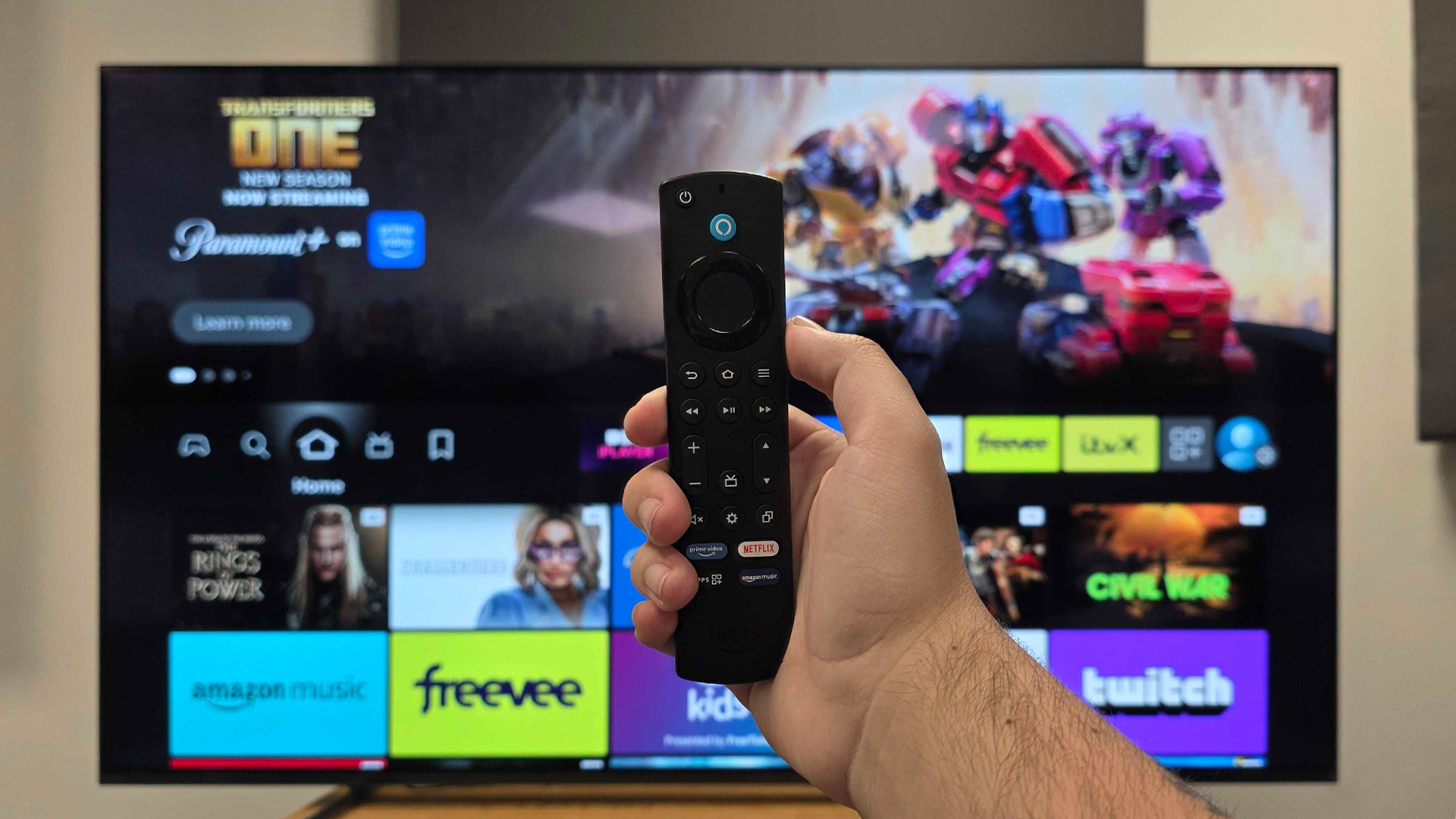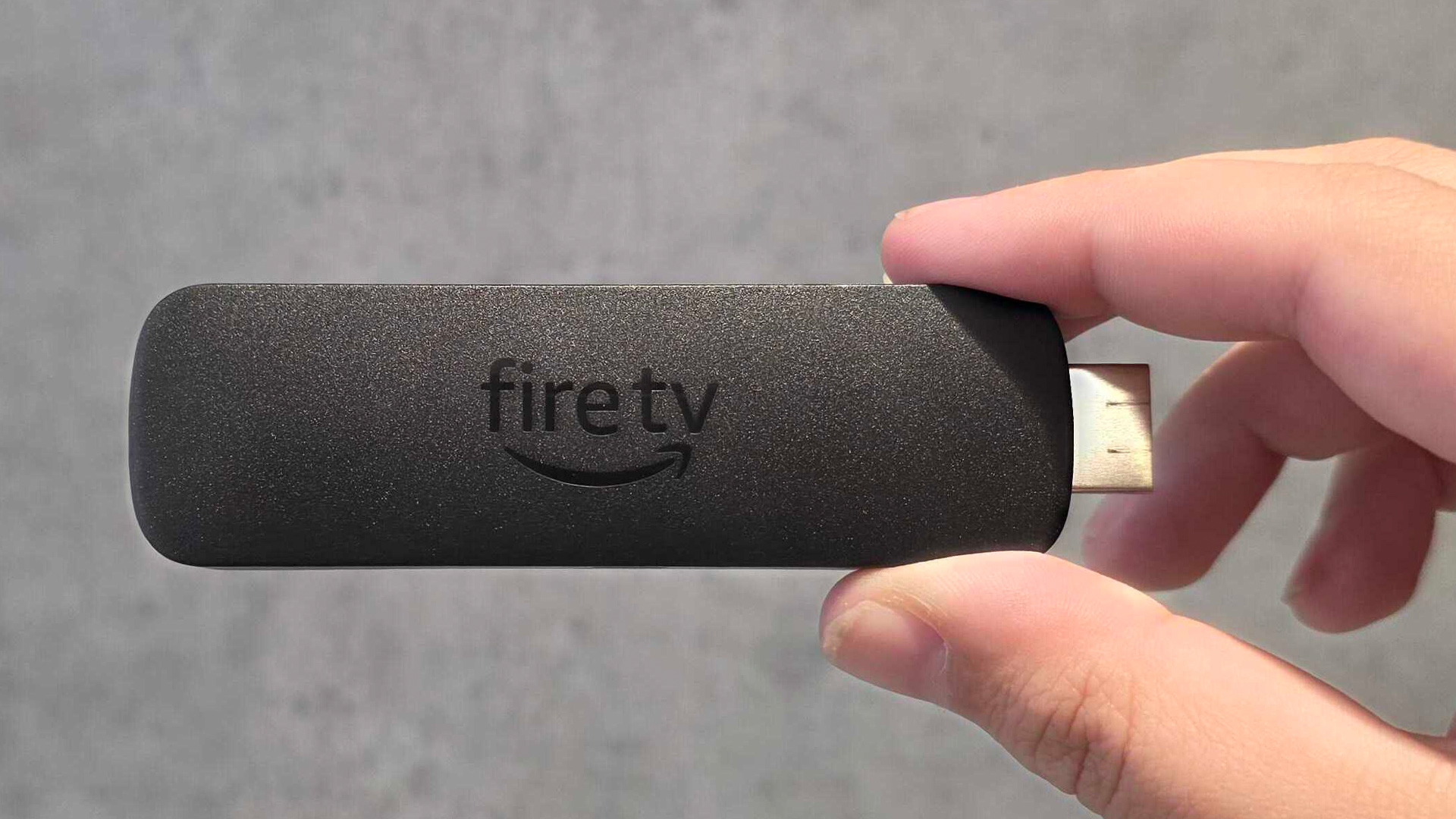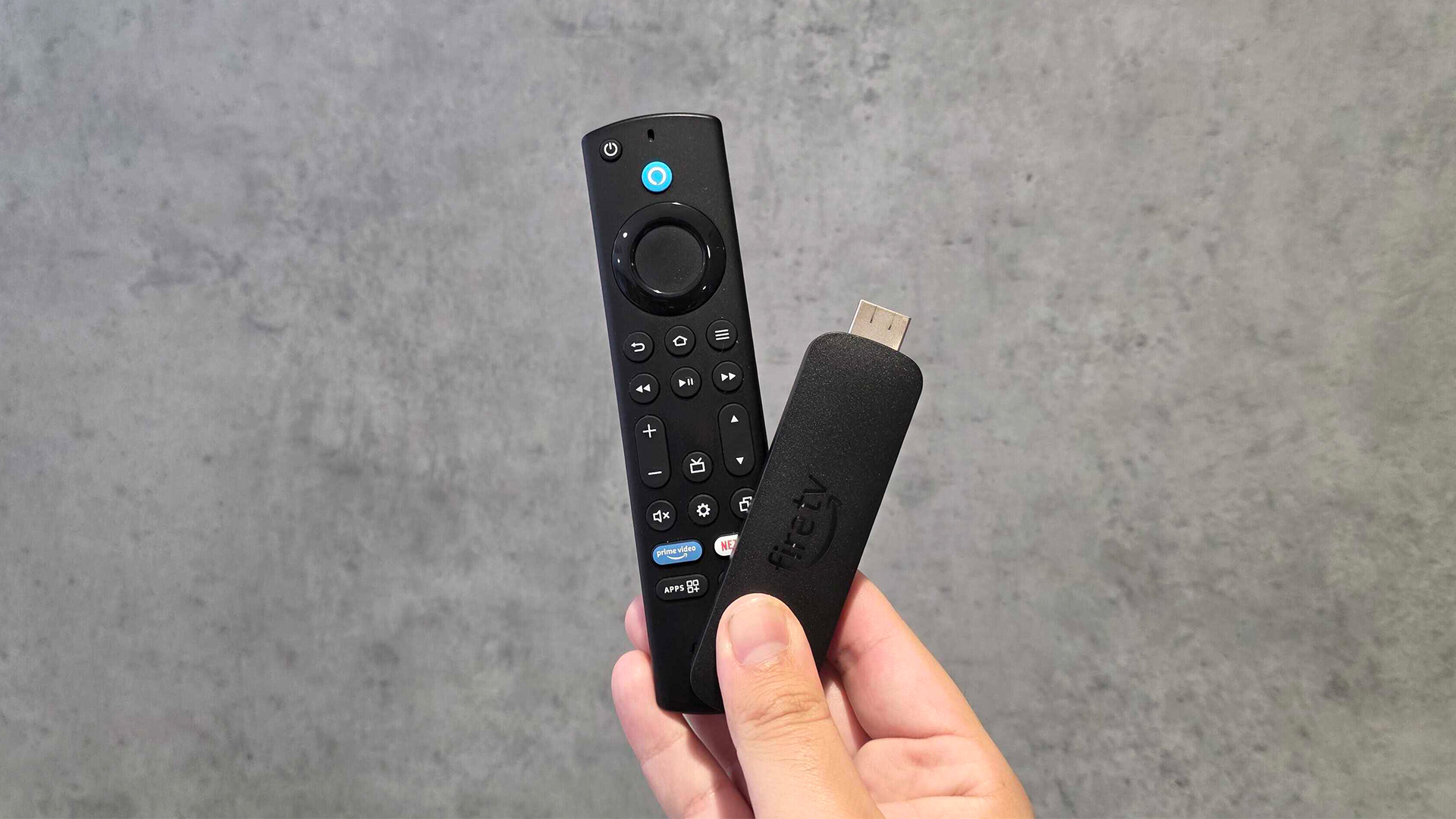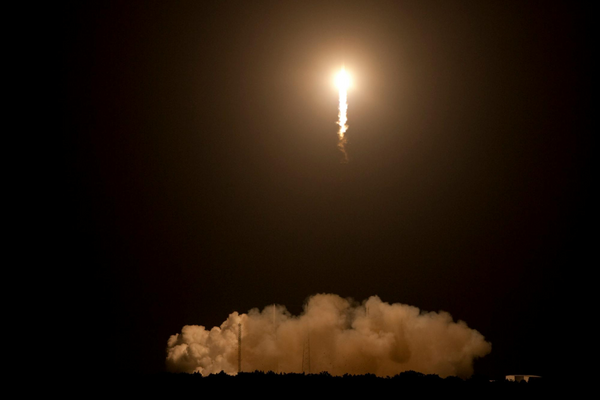
Amazon’s Fire TV Stick range of streaming devices may not be the most glamorous or technically impressive products that we see in our AV testing room, but they serve a specific purpose and perform said purpose well.
Case in point is the first-generation Amazon Fire TV Stick 4K Max, which offered affordable plug-and-play 4K HDR streaming, with a solid picture performance and feature set that was hard to argue with, especially for the price.
The only thing holding that streamer back was the existence of the then-Award-winning Google Chromecast with Google TV, which just edged out the first-generation Fire TV Stick 4K Max when it came to picture and sound performance.
Luckily for Amazon, Google has since discontinued that device and replaced it with a streamer that’s nearly double the price, and not quite as good. So, it would make total sense for Amazon to strike while the iron is hot, and deliver an upgraded streaming stick that undercuts the Google TV Streamer; and that’s exactly what it has done.
Today, we have the second-generation Amazon Fire TV Stick 4K Max, and with upgraded performance, a significant lack of competition and a tempting price tag, it might just be the easiest no-brainer buy in the AV world.
Price

The Amazon Fire TV Stick 4K Max (2nd Generation) officially costs £70 / $60 / AU$120; a smidge more than its predecessor’s £65 / $55 / AU$99 starting price. While a price rise – albeit minor – isn’t necessarily a welcome sight, what will be more enticing are the discounts that this streamer will inevitably receive throughout the year.
During its own sales events – Big Deal Days, Prime Day and Black Friday – Amazon almost always heavily discounts its own products. You can expect to pay closer to £50 / $40 / AU$89 if you time your purchase right.
Better yet, Amazon’s new streamer benefits from a major player exiting the market. Google’s Chromecast with Google TV was the roadblock preventing the previous generation Fire TV Stick 4K Max from achieving the full five-star commendation; however, that Award-winning streamer has been discontinued.
Google has replaced it with the four-star Google TV Streamer, which costs £99 / $100 / AU$160; considerably more than the Chromecast’s £60 / $50 / AU$99 launch price and, more importantly, the Fire TV Stick 4K Max.
As for other rivals, Roku’s Streaming Stick 4K undercuts the Amazon streamer at £50 / $50 / AU$110, though it’s yet to land in our AV testing room.
Build

The new Fire TV Stick isn’t a radical departure from its predecessors, though there are some identifying features to distinguish this newer model.
It’s still an all-plastic cuboid with an HDMI connector sticking out of one end, akin to an oversized USB thumb drive with the corners rounded off.

Resolution Up to 4K HDR, 60fps
Bluetooth? Yes, 5.2
HDR formats Dolby Vision, HDR10, HDR10+, HLG
Remote control? Yes
Dimensions (hwd) 1.4 x 11 x 3cm (including the connector)
Weight 46g
Unfortunately, this means that the last generation’s tendency to hog the area surrounding the HDMI socket it's lodged into is once again prevalent, meaning you may struggle to plug a cable into the adjacent HDMI port unless you use the included adapter.
A further design oversight relates to the power socket, which bafflingly uses Micro USB rather than the widely accepted USB-C standard. While we appreciate Amazon including a power adapter in the box, the decision to stick with the older, less convenient and less widely used connection is an odd choice indeed.
Moving away from the stick itself and onto the remote, Amazon has bundled in the same Alexa Voice Remote Enhanced model that can be found with the Fire TV Cube (3rd Generation). It’s functional, comfortable to hold, and features shortcuts to streaming services, which will differ depending on which region you purchase it in.
We would have liked to see the “find my remote” function included here, as it comes as standard on the Google TV Streamer; however, you’ll need to purchase the optional Fire TV Remote Pro for that, which also includes backlit buttons.
Features

The Fire TV Stick 4K Max’s only mission is to bring 4K streaming smarts to your TV, and it does so with a decent list of appreciated features.
HDR, for example, is supported in all of the major formats, including Dolby Vision, HDR10+, HDR10 and HLG, meaning this streaming stick will play nicely with your TV regardless of whether you own a Dolby Vision-sporting LG TV or an HDR10+ only Samsung.
Furthermore, it supports Dolby Atmos audio, as well as up to 7.1 surround sound.
Inside the Fire TV Stick is a 2.0 GHz quad-core processor, and Amazon has been kind enough to double the storage from 8GB to 16GB, though RAM stays at 2GB.
Wi-Fi 6E is also supported, which should offer “smoother 4K streaming”, according to Amazon – though you’ll need a compatible router to access this.
At the heart of the Fire TV Stick experience is Fire OS, which you’ll also find on the company’s Omni-series QLED and Mini LED TVs, as well as (from 2024) Panasonic’s OLED TVs.
It’s a robust, well-supported and versatile operating system, which might not look quite as clean as Apple’s tvOS or be brimming with AI features like Google TV, but it's good for the straightforward streaming tasks that we require of a Fire TV Stick.
One area where Fire OS frustrates is with its ad-heavy nature. Amazon’s services are also pushed to the forefront, which shouldn’t be too surprising considering it manufactured the device, and the ads can be somewhat forgiven thanks to the device’s relatively low price tag.
App support is, unsurprisingly, excellent, with a full range of global streaming apps – including Netflix, Disney+, Apple TV and, of course, Amazon Prime Video – and domestic services such as BBC iPlayer, ITVX, Channel 4 and more.
Fire OS is also home to some niche services, including Mubi, Shudder, BFI Player and others, making this a solid choice for mainstream and indie movie fans.
Something to note with the Apple TV app is that it's exclusively used as a hub for Apple TV+ content and a way to access your existing Apple TV library. The store cannot be accessed directly through this app, so you’ll need to purchase your desired movie or TV series on a smartphone or tablet to watch it on the Fire TV Stick 4K Max.
Music and gaming apps are also well supported, with the likes of Spotify, Tidal and Deezer on board, though Apple Music is unfortunately sidelined. Thankfully, that can be circumvented with the inclusion of AirPlay 2.
Gaming-wise, Amazon’s Luna cloud gaming service and Xbox are the two major players, while casual games that can be controlled via the included remote are also accessible.
Picture

Much like its predecessor, the Fire TV Stick 4K Max provides plenty of positive picture attributes, which makes it a rather compelling streamer for the money. Better yet, it doesn’t have the Chromecast with Google TV to contend with, and instead now has the four-star Google TV Streamer as its major adversary.
We plug the Fire TV Stick into our reference Sony OLED TV and load up a range of streaming apps onto the device to deduce how it handles picture performance.
Firing up Mission: Impossible – Dead Reckoning on Netflix, the Fire TV Stick delivers a sharp and engaging picture, with plenty of detail in the suits worn by Ethan Hunt and his well-dressed gang as they plan out their mission in Abu Dhabi Airport.
There is ample detail to skin textures, and aside from a few instances of skin tones looking a tad on the warm side, the Fire TV Stick generally impresses.
We also take no issue with how motion is handled, as the MV-22 Osprey military aircraft carrying a troop of elite agents tasked with hunting down the hero glides smoothly into frame, with the whirring propellers showing no signs of awkward juddering or stuttering.
Switching to Challengers in HDR10+ on Amazon Prime Video, we’re once again impressed with the detail levels, colours, and motion, deducing that the Stick 4K Max provides a balanced and enjoyable image overall.
Furthermore, the film grain that can sometimes be presented as overbearing image noise on the Google streamer seems cleaner and looks more intentional on the Fire TV Stick.
Feeding the Fire TV Stick some HD content, namely Gladiator II, once again on Prime Video, we do notice that the edges of subjects get slightly softer. That being said, clothing and skin remain detailed enough, and the streamer certainly doesn’t make a big deal of presenting the comparatively lower resolution content.
We compare it directly to the Google TV Streamer with these aforementioned movies, alongside Mad Max: Fury Road and Babylon on the Apple TV app, and this is where things get interesting.
Despite costing a fair bit more than the Fire TV Stick 4K, the Google TV Streamer’s picture looks nearly identical. We can pick out a touch more detail on the Google TV, and colours are slightly punchier (if anything, we could accuse the Google of overdoing skin tones here), but otherwise, we struggle to see the point in shelling out for the pricier Google TV Streamer when it comes to picture performance.
Sound

While the picture performance is practically identical to the Google TV Streamer (albeit for less money), where we see the biggest difference between these two streamers is in sound quality. Make no mistake, the Fire TV Stick 4K is no maestro, but it's a darn sight better than the Google TV Streamer.
Loading up Tidal to stream tracks including Gasoline by HAIM and Taylor Swift, Luther by Kendrick Lamar and SZA, and From by Bon Iver, we’re met with sound that can best be described as solid. It won’t blow your socks off, and timing is one aspect where the Fire TV Stick does falter, but it’s a warmer, more cohesive and dynamic performance compared with the poor-sounding Google TV Streamer.
This is true for movies and TV shows as well, as we return to Mission: Impossible to find clear and detailed vocals that have been prioritised within the greater audio mix. That being said, they don’t sound detached, and the tense soundtrack still has its chance to build suspense effectively.
Verdict

Amazon’s flagship streaming stick is a solid option for anyone whose TV’s built-in streaming apps just aren’t cutting it. Its sharp and colourful picture, paired with its easy plug-and-play usability, should appease those who want to squeeze a bit more life out of their ageing 4K TV, or sidestep their TV’s built-in operating system.
Unless you’re considering stepping up to the Apple TV 4K, which costs double the price, the Fire TV Stick 4K is the go-to 4K streaming device at this level.
SCORES
- Picture 5
- Sound 4
- Features 4
MORE:
Read our review of the Google TV Streamer
Also consider the Apple TV 4K







